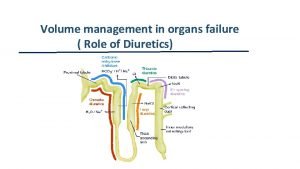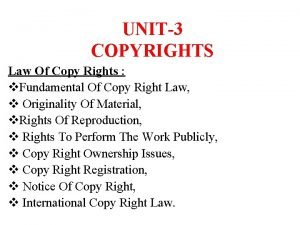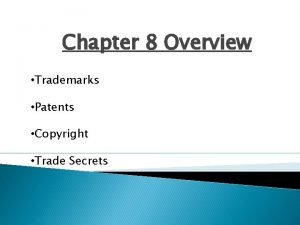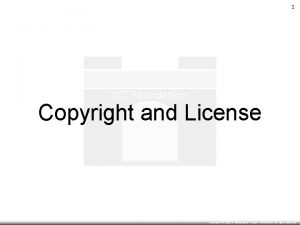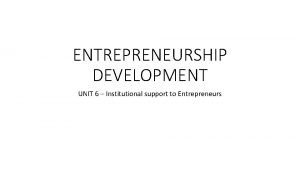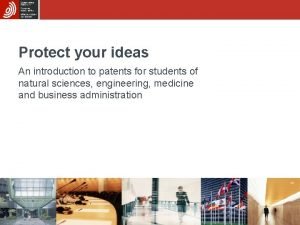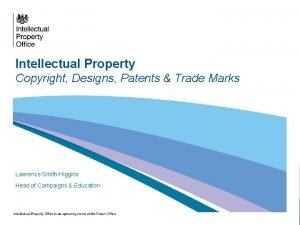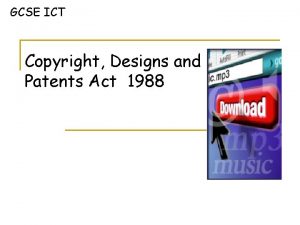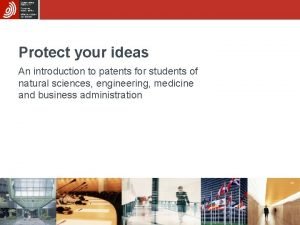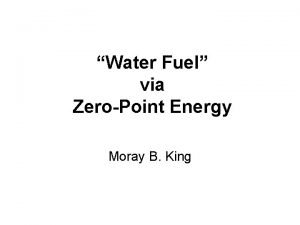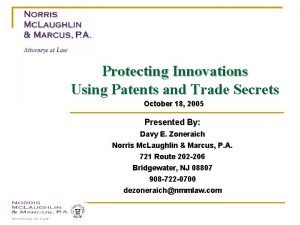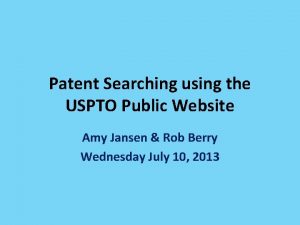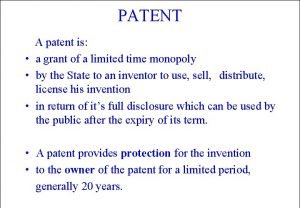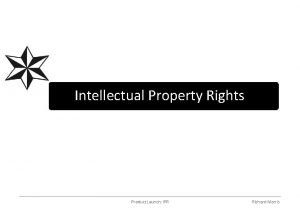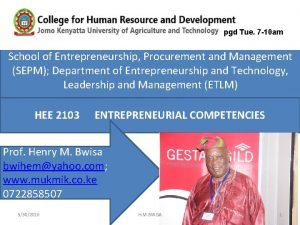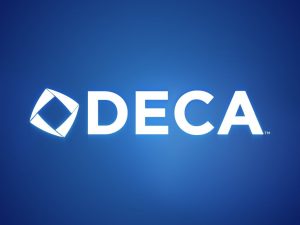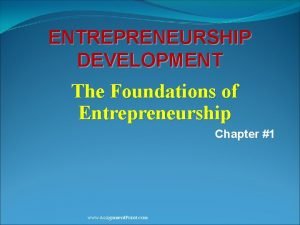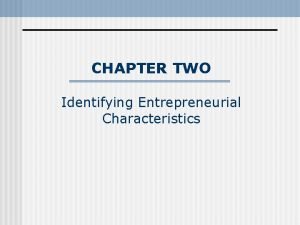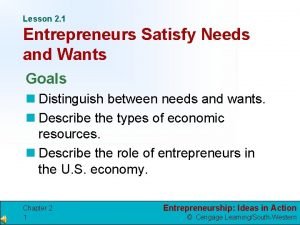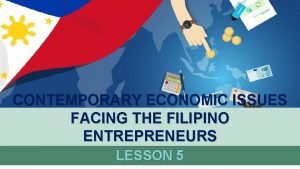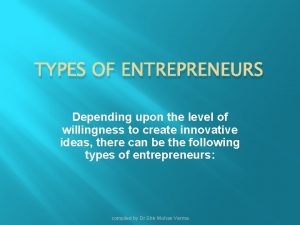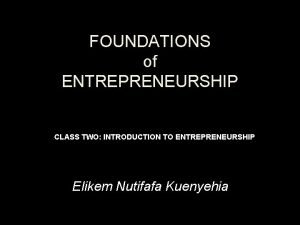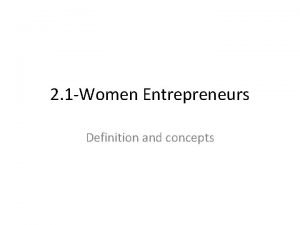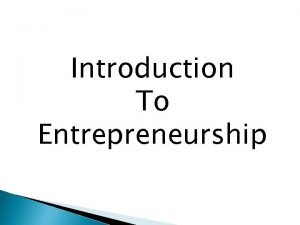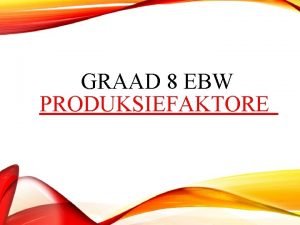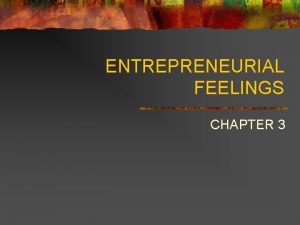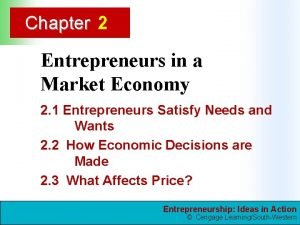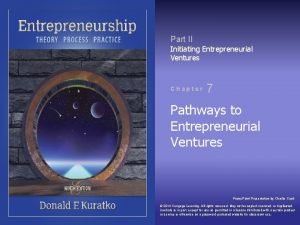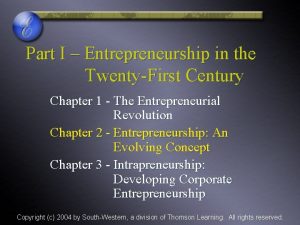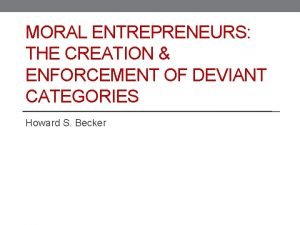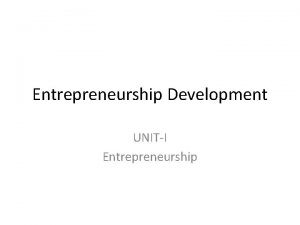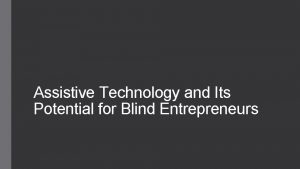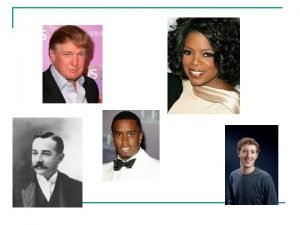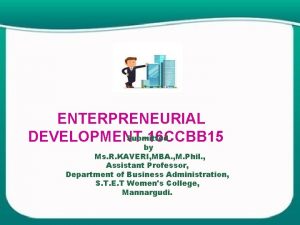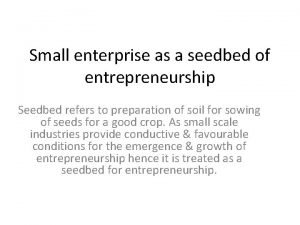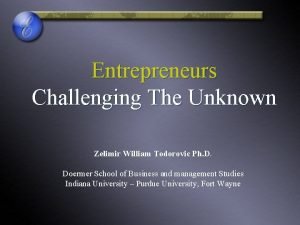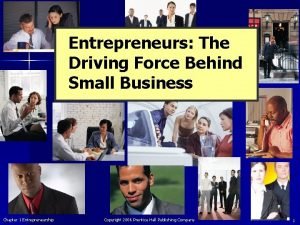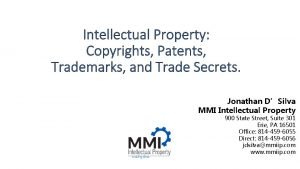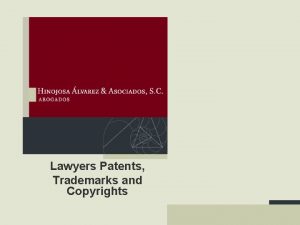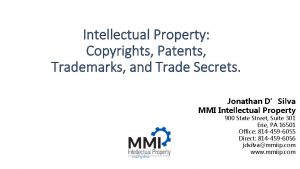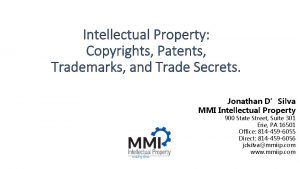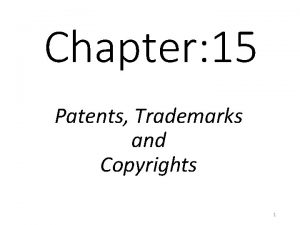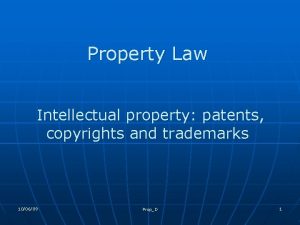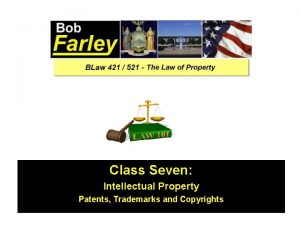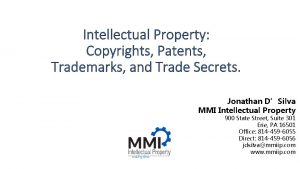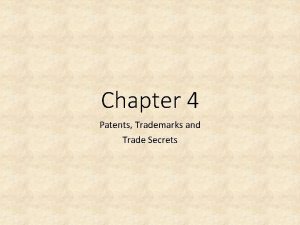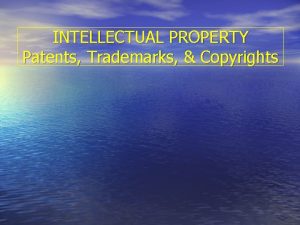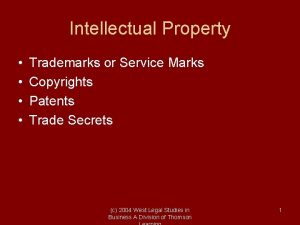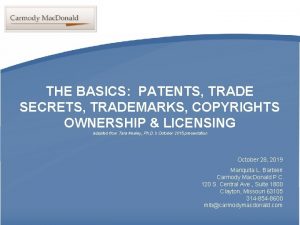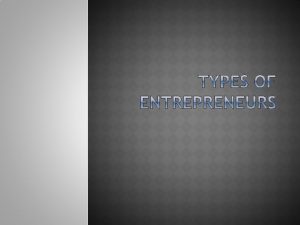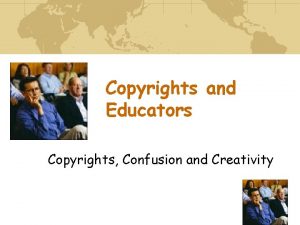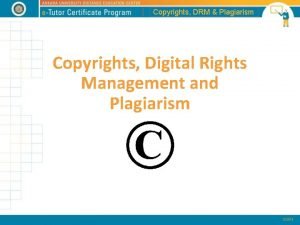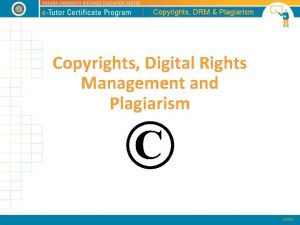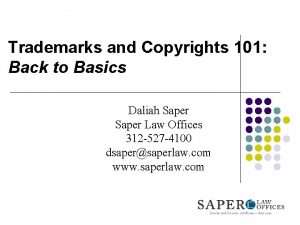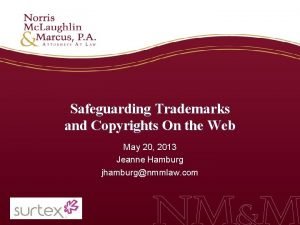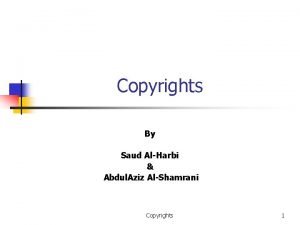Copyrights Trademarks and Patents What Entrepreneurs Need to
















































- Slides: 48

Copyrights, Trademarks, and Patents What Entrepreneurs Need to Know Presented by : Benjamin W. Janke 201 St. Charles Avenue Suite 3600 New Orleans, Louisiana 504. 566. 8607 bjanke@bakerdonelson. com Warner J. Delaune 450 Laurel Street 20 th floor Baton Rouge, Louisiana 225. 381. 7032 wdelaune@bakerdonelson. com

IP BASICS The Big 4: • Trademark • Copyright • Patent • Trade Secrets (not covered) www. bakerdonelson. com © 2014 Baker, Donelson, Bearman, Caldwell & Berkowitz, PC 2

Trademark A trademark is a symbol used by a person in commerce to indicate the source of the goods and to distinguish them from the goods sold or made by others. The symbol can be a word, phrase, design, image, sound, color, or even fragrance. Any word, name, symbol, device, or combination thereof either used or intended to be used by a person to identify and distinguish goods or services from those of others and to indicate their source of origin www. bakerdonelson. com © 2014 Baker, Donelson, Bearman, Caldwell & Berkowitz, PC 3

Trademarks • Word (without stylization): NBC • Word (with stylization): • Logo or symbol • Combination thereof • Even a sound or a color www. bakerdonelson. com © 2014 Baker, Donelson, Bearman, Caldwell & Berkowitz, PC 4

Creation upon Use In Commerce Creation • Trademark rights conferred by use in commerce • Registration with U. S. Patent and Trademark Office is not required, but brings benefits: − Nationwide notice − Can achieve incontestable status − Additional remedies & statutory penalties for infringement • Goals: − Consumer Protection − Incentives to Users www. bakerdonelson. com © 2014 Baker, Donelson, Bearman, Caldwell & Berkowitz, PC 5

Avoiding the “Likelihood of Confusion” www. bakerdonelson. com © 2014 Baker, Donelson, Bearman, Caldwell & Berkowitz, PC 6

Trademark – Choosing a Strong Mark Levels of Distinctiveness • Fanciful or Coined • Arbitrary • Suggestive _________ • Descriptive • Generic www. bakerdonelson. com © 2014 Baker, Donelson, Bearman, Caldwell & Berkowitz, PC 7

Trademark – Levels of Distinctiveness Fanciful or Coined • Letters that form a word without meaning, has no relation to the product • Strongest type of mark • E. g. , KODAK, EXXON Problem: Can become generic www. bakerdonelson. com © 2014 Baker, Donelson, Bearman, Caldwell & Berkowitz, PC 8

Trademark – Levels of Distinctiveness Arbitrary • One or more words whose common meaning has nothing to do with the goods or services being labeled • Strong mark • E. g. , PARLIAMENT, CAMEL, used for cigarettes www. bakerdonelson. com © 2014 Baker, Donelson, Bearman, Caldwell & Berkowitz, PC 9

Trademark – Levels of Distinctiveness Suggestive • One or more words that hint at or suggest the nature of a product without actually describing it • Requires a mental step before association between mark and product is understood www. bakerdonelson. com © 2014 Baker, Donelson, Bearman, Caldwell & Berkowitz, PC 10

Trademark – Levels of Distinctiveness Descriptive • Words that merely describe the product or its components or ingredients • Very weak; protectible as trademark only if it can establish that term has acquired “secondary meaning” • E. g. , World Book (encyclopedia); 5 Minute Massage www. bakerdonelson. com © 2014 Baker, Donelson, Bearman, Caldwell & Berkowitz, PC 11

Trademark – Levels of Distinctiveness Generic • Words that designate the “genus” of the product or what the product is • Cannot trademark • E. g. , THERMOS, ASPIRIN, CELLOPHANE www. bakerdonelson. com © 2014 Baker, Donelson, Bearman, Caldwell & Berkowitz, PC 12

Spectrum of Distinctiveness Levels of Distinctiveness • Fanciful or Coined • Arbitrary Capable of Registration As “Inherently Distinctive” • Suggestive _________ • Descriptive • Generic www. bakerdonelson. com © 2014 Baker, Donelson, Bearman, Caldwell & Berkowitz, PC Only with “acquired distinctiveness” Not Registerable 13

Secondary Meaning • Used to be descriptive • Acquired distinctiveness “as a trademark” when the primary significance of Coca-Cola is now the identifier of the source www. bakerdonelson. com © 2014 Baker, Donelson, Bearman, Caldwell & Berkowitz, PC 14

Goods and Services • Not “squatter's rights” • Only registerable for the goods and services for which you seek trademark protection www. bakerdonelson. com © 2014 Baker, Donelson, Bearman, Caldwell & Berkowitz, PC 15

Use it or lose it! • Trademark law is dependent upon use of the mark www. bakerdonelson. com © 2014 Baker, Donelson, Bearman, Caldwell & Berkowitz, PC 16

Copyrights What is a copyright? • A bundle of rights protecting an original work of authorship fixed in any tangible medium of expression U. S. Constitution, Art. 1, Sec. 8, Cl. 8 17 U. S. C. § 101 et seq. www. bakerdonelson. com © 2014 Baker, Donelson, Bearman, Caldwell & Berkowitz, PC 17

Copyrights What is copyrightable? • Literary works • Musical works (incl. words) • Dramatic works (incl. music) • Pantomimes and choreographic works • Pictorial, graphics and sculptural works • Motion pictures and audiovisual works • Sound recordings • Architectural works • Computer software www. bakerdonelson. com © 2014 Baker, Donelson, Bearman, Caldwell & Berkowitz, PC 18

Copyrights What is NOT copyrightable? • Names • Titles • Slogans, short phrases • Domain names • Facts, ideas, systems, methods • Recipes (mere listing of ingredients) • Clothing designs www. bakerdonelson. com © 2014 Baker, Donelson, Bearman, Caldwell & Berkowitz, PC 19

Copyrights Creation • Copyright automatically exists as soon as work is created in “fixed form” • Registration with U. S. Copyright Office is not required, but brings benefits: − Ability to bring infringement action − Timely registration allows recovery of statutory damages and attorneys fees − Prima facie evidence of validity of copyright www. bakerdonelson. com © 2014 Baker, Donelson, Bearman, Caldwell & Berkowitz, PC 20

Copyrights • To be protected by copyright, a work must contain at least a certain minimum amount of authorship in the form of original literary, musical, pictorial, or graphic expression. www. bakerdonelson. com © 2014 Baker, Donelson, Bearman, Caldwell & Berkowitz, PC 21

Copyrights Computer Program • Set of statements or instructions to be used directly or indirectly in a computer in order to bring about a certain result • Protects that particular expression of the set of statements or instructions, not what the program does www. bakerdonelson. com © 2014 Baker, Donelson, Bearman, Caldwell & Berkowitz, PC 22

Copyrights What is in the bundle of rights? • Reproduce the work in copies or phonorecords • Prepare derivative works • Distribute copies or phonorecords • Perform the work publicly • Display the work publicly www. bakerdonelson. com © 2014 Baker, Donelson, Bearman, Caldwell & Berkowitz, PC 23

Copyrights – Performing Rights Organizations (PROs) www. bakerdonelson. com © 2014 Baker, Donelson, Bearman, Caldwell & Berkowitz, PC 24

Copyright Infringement www. bakerdonelson. com © 2014 Baker, Donelson, Bearman, Caldwell & Berkowitz, PC 25

Copyrights - Licensing www. bakerdonelson. com © 2014 Baker, Donelson, Bearman, Caldwell & Berkowitz, PC 26

Patents What is a Patent? • Set of exclusive rights granted to an inventor for a fixed period of time in exchange for the public disclosure of the invention • Limited property right U. S. Const. Article I, Section 8 35 U. S. C. § 101 et seq. www. bakerdonelson. com © 2014 Baker, Donelson, Bearman, Caldwell & Berkowitz, PC 27

Exclusive Rights • Right to exclude others from making, using, selling, offering to sell the invention within the U. S. , or importing into the U. S. • Does not give inventor the right to make, use, sell, offer to sell − still bound by regulatory restrictions − still subject to other prior patents − improvements (only the new stuff) www. bakerdonelson. com © 2014 Baker, Donelson, Bearman, Caldwell & Berkowitz, PC 28

Types of Patents • Utility – protects a useful device or method, e. g. the way it works or is used; functional and structural features • Design – protects the ornamental (non-functional) appearance of an article, e. g. the way it looks • Plant – protects certain types of asexually reproducible plant varieties www. bakerdonelson. com © 2014 Baker, Donelson, Bearman, Caldwell & Berkowitz, PC 29

Utility Patent Requirements • • Patentable Subject Matter Utility (must be useful) Novelty (no single patent discloses all of the invention) Nonobvious to a person of ordinary skill in the art to which the invention pertains (may be shown by combinations) www. bakerdonelson. com © 2014 Baker, Donelson, Bearman, Caldwell & Berkowitz, PC 30

Utility Patents – Subject Matter • Machine – concrete thing, consisting of parts or of certain devices and combinations of devices • Manufacture (Article of Manufacture) – production of articles for use from raw or prepared materials by giving to these materials new forms, qualities, properties or combinations, whether by hand labor or by machinery • Composition of Matter – composition of two or more substances; chemical compounds; gas, fluid, powder or solid • Process – act, or a series of acts, performed upon the subjectmatter to be transformed and reduced to a different state or thing; methods www. bakerdonelson. com © 2014 Baker, Donelson, Bearman, Caldwell & Berkowitz, PC 31

Patentable Subject Matter • CANNOT obtain a patent for: - Scientific truths, laws of nature - Mathematical expressions - Algorithms - Abstract ideas - Physical phenomena www. bakerdonelson. com © 2014 Baker, Donelson, Bearman, Caldwell & Berkowitz, PC 32

Novelty is destroyed by: − public use of invention − prior sales or offers for sale of invention − printed publication of invention …ANYWHERE IN THE WORLD Unlike copyrights and trademarks, you must: 1) timely file application with the USPTO; and 2) (2 undergo examination and have patent issued www. bakerdonelson. com © 2014 Baker, Donelson, Bearman, Caldwell & Berkowitz, PC 33

Ownership • Individuals and entities can apply for a patent • Inventors can assign the patent to an entity • Each inventor owns full rights to invention without an obligation to the other inventors • BOTTOM LINE: Consolidate ownership; get obligation to assign IP rights in employment agreement! www. bakerdonelson. com © 2014 Baker, Donelson, Bearman, Caldwell & Berkowitz, PC 34

Provisional Patent Application • • Low cost and quick No claims required No particular format Provides earlier effective filing date, permits use of “patent pending” status • Not examined; only a place holder • Does not issue into a patent • Must file nonprovisional utility application within 1 year www. bakerdonelson. com © 2014 Baker, Donelson, Bearman, Caldwell & Berkowitz, PC 35

Licensing • Contract where parties agree to the terms and conditions under which certain rights in the invention/patent are granted (manufacturing, selling, etc. ) • Exclusive or nonexclusive • Field of use restrictions (industries, markets, uses, etc. ) • Geographical restrictions • Royalties or other compensation (highly variable) www. bakerdonelson. com © 2014 Baker, Donelson, Bearman, Caldwell & Berkowitz, PC 36

Enforcement/Infringement • To infringe a patent claim, all elements of a claim must be present in the accused device or method • Patent owner is entitled to a claim scope commensurate with the details of the specification and their “reasonable equivalents” • Patent validity will always be contested: − Failure to consider material prior art − Concessions made during prosecution (estoppel) − Inequitable conduct www. bakerdonelson. com © 2014 Baker, Donelson, Bearman, Caldwell & Berkowitz, PC 37

Top 10 Patent Points for the Product Development Cycle www. bakerdonelson. com © 2014 Baker, Donelson, Bearman, Caldwell & Berkowitz, PC 38

Conception and Reduction to Practice • Write all ideas down with dates of conception; can avert undeserved co-inventorship • Keep a written record of changes and improvements • Identify all collaborators with brief description of contribution to the effort; missing co-inventors can cause expense, broken deals, and invalidity • Manuals, grant proposals, etc. , are very helpful; great basis for patent application specification • Store in a safe place, like in the “cloud”; think Katrina and Rita… www. bakerdonelson. com © 2014 Baker, Donelson, Bearman, Caldwell & Berkowitz, PC 39

Secrecy • Secure strong nondisclosure agreements (NDAs) with other parties, but limit the number of NDA’s; not everyone is worth it or trustworthy • Should contain assignment language to avert co-ownership problems with co-inventors; may meet with some resistance, but the alternative is worse with an “unintended partner” • Term should be for at least enough time to get past a long patent prosecution (assuming no publication at 18 months); typically 3 -5 years www. bakerdonelson. com © 2014 Baker, Donelson, Bearman, Caldwell & Berkowitz, PC 40

Search • Searching is optional, BUT: − Prevents throwing good money out after bad − Knowing prior art is critical for drafting persuasive specifications and claims − Anticipate possible rejections − Trade journals and other technical publications must be considered in rapidly evolving technologies (no patent records); think software, pharma, solar, nanotechnology, etc. www. bakerdonelson. com © 2014 Baker, Donelson, Bearman, Caldwell & Berkowitz, PC 41

Provisional Applications • Use provisional applications sparingly and wisely − Delays in examination; only a place holder for up to 12 months − Added costs − Failure to adequately support claims in later nonprovisional application − May jeopardize foreign rights if too lean an initial disclosure, because the same 12 month deadline applies www. bakerdonelson. com © 2014 Baker, Donelson, Bearman, Caldwell & Berkowitz, PC 42

Filing Strategy • Develop a strategy for protecting a portfolio of ideas (alternate embodiments, future developments, etc. ); build the spider web • FOCUS: “all eggs in one basket” rarely makes good sense; only one invention per application; restriction requirements and election of species will cause divisionals anyway • Filing decisions and claim drafting should factor in how products will be marketed; think system vs. method, and how prospective licensees may want one, but not the other www. bakerdonelson. com © 2014 Baker, Donelson, Bearman, Caldwell & Berkowitz, PC 43

Organization and Priorities • Patents are business tools • Treat each idea/application as an asset to be valued in a transaction; how can each asset be monetized? • Many early stage companies rely almost entirely on IP assets (rather than revenue); even a portfolio of pending applications preserves IP rights for prospective purchasers, and may be important to future investors • Let licensing and enforcement considerations drive the discussion regarding claims, including which divisionals and CIP’s may be desirable www. bakerdonelson. com © 2014 Baker, Donelson, Bearman, Caldwell & Berkowitz, PC 44

Disclose Prior Art • Affirmative duty of disclosure of known prior art to the USPTO; only if “material to the examination” • No “hiding the ball”; full disclosure is part of the deal between you (patent owner), the public (progress of science and the useful arts), and the federal court system (enforcement of your rights) • Potential invalidity for failure to disclose prior art • Includes prior art from foreign patent prosecutions which may not have been considered in the U. S. • Avoids inequitable conduct defense by infringers www. bakerdonelson. com © 2014 Baker, Donelson, Bearman, Caldwell & Berkowitz, PC 45

Defense • Patents are a sword, not a shield − Patents provide only an exclusionary right; no rights to do anything, only to stop others from doing what’s in the patent − No relevance to infringement of prior patents; just because you have a patent, you can still be sued for infringement − Know competitor’s patent portfolio; map out claims for “design around” efforts; think Venn diagrams − Possible use of patents as a basis for counterclaims and crosslicensing to settle disputes www. bakerdonelson. com © 2014 Baker, Donelson, Bearman, Caldwell & Berkowitz, PC 46

International Patents • U. S. is a signatory to several multinational patent treaties; preserve international rights (national, regional, PCT) before 12 months from initial application − But will depend on U. S. non-publication request; if nonpublication request is filed, then filing foreign will jeopardize U. S. application − Add “outlier” countries that may be important based on market and manufacturing, e. g. Taiwan, and some South American, African, and Middle East countries − PCT search results are almost always faster than U. S. examiners − Budget carefully and prioritize; can be very expensive www. bakerdonelson. com © 2014 Baker, Donelson, Bearman, Caldwell & Berkowitz, PC 47

America Invents Act (March 17, 2013) • File early and often • No more “first to invent” (now first inventor to FILE); effective March 2013 • Still have to be an “inventor”; can’t file for others’ inventions • Self-disclosure buys a 1 -year grace period and can avoid some prior art, but ruins international rights in “absolute novelty” countries • Still a 12 -month grace period from your own disclosures, but not disclosures of others • Post-grant review within 9 months may reduce some litigation? www. bakerdonelson. com © 2014 Baker, Donelson, Bearman, Caldwell & Berkowitz, PC 48
 Copyrights
Copyrights Copyrights
Copyrights Copyrights
Copyrights Copyrights
Copyrights Copyrights
Copyrights Institutions supporting entrepreneurs
Institutions supporting entrepreneurs Entrepreneurs need logos
Entrepreneurs need logos Advantage of patent
Advantage of patent What is the copyright designs and patents act 1988
What is the copyright designs and patents act 1988 What is the copyright designs and patents act 1988
What is the copyright designs and patents act 1988 Advantages and disadvantages of patents
Advantages and disadvantages of patents Youtube.com
Youtube.com Definition of trade secrets
Definition of trade secrets Types of patent
Types of patent Insecticide act
Insecticide act Patents
Patents Enterprising skills
Enterprising skills Difference between an entrepreneur and a manager
Difference between an entrepreneur and a manager Deca prepares the next generation to be
Deca prepares the next generation to be Difference between entrepreneurs and managers
Difference between entrepreneurs and managers Assignment on entrepreneurship development
Assignment on entrepreneurship development Difference between an entrepreneur and a manager
Difference between an entrepreneur and a manager 10 differences between needs and wants
10 differences between needs and wants Problem of filipino entrepreneur
Problem of filipino entrepreneur These are entrepreneurs who are to follow the path
These are entrepreneurs who are to follow the path Entrepreneurs industrial revolution
Entrepreneurs industrial revolution Entrepreneurs vs businessman
Entrepreneurs vs businessman Entrepreneurs industrial revolution
Entrepreneurs industrial revolution Definition of women entrepreneur
Definition of women entrepreneur Define women entrepreneurs
Define women entrepreneurs Myth 3: entrepreneurs are motivated primarily by money
Myth 3: entrepreneurs are motivated primarily by money Natuurlike hulpbronne graad 8
Natuurlike hulpbronne graad 8 Historical entrepreneurs in the food industry
Historical entrepreneurs in the food industry Entrepreneurial feelings
Entrepreneurial feelings Chapter 2 entrepreneurs in a market economy
Chapter 2 entrepreneurs in a market economy Chapter 7: pathways to entrepreneurial ventures
Chapter 7: pathways to entrepreneurial ventures Displacement school of thought
Displacement school of thought Moral entrepreneurs
Moral entrepreneurs Entrepreneur means “to undertake.” *
Entrepreneur means “to undertake.” * Youth entrepreneurs montana
Youth entrepreneurs montana Blind entrepreneurs
Blind entrepreneurs Entrepreneurs work until the job is done
Entrepreneurs work until the job is done Name 2 famous entrepreneurs of the gilded age
Name 2 famous entrepreneurs of the gilded age Fabian entrepreneurs are
Fabian entrepreneurs are Small business as a seedbed of entrepreneurship
Small business as a seedbed of entrepreneurship Unknown entrepreneurs
Unknown entrepreneurs Are entrepreneurs encouraged in a traditional economy
Are entrepreneurs encouraged in a traditional economy Standard oil monopoly
Standard oil monopoly Women entrepreneurs statistics
Women entrepreneurs statistics

